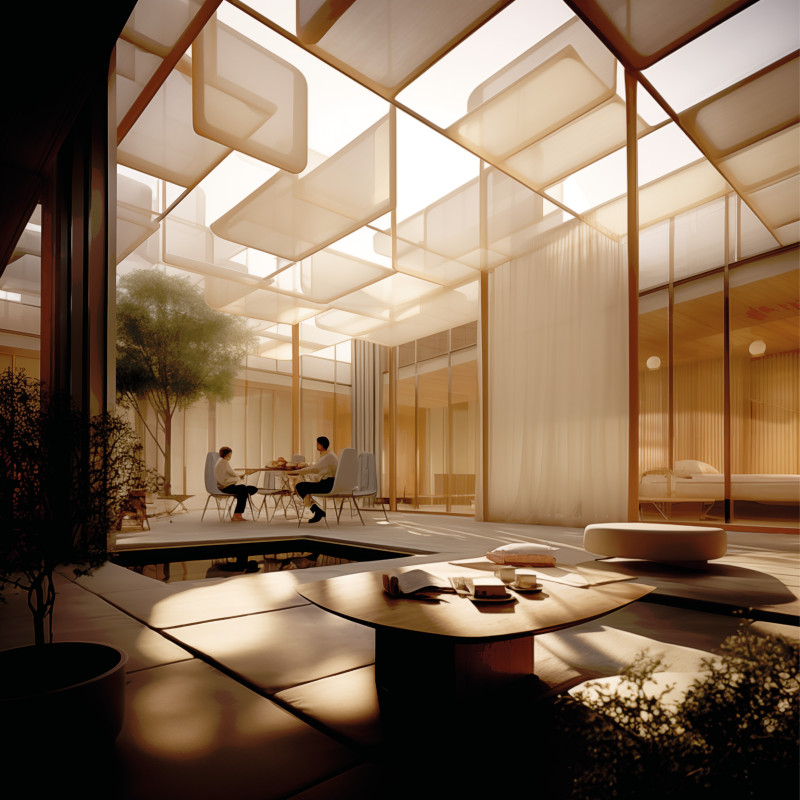5 key facts about this project
At first glance, the design reveals a deliberate composition of forms that exhibit a striking interaction with the surrounding environment. The architects have skillfully integrated the structure with its site, utilizing natural topography and existing landscape features to enhance the overall presence of the building. This thoughtful approach not only contributes to the visual appeal but also emphasizes a commitment to environmental stewardship—an essential consideration in today’s architectural practice.
The materiality of the project plays a critical role in both its aesthetic and functional aspects. A selection of materials has been employed, including sustainable timber, exposed concrete, and glass, which together create a harmonious balance between warmth and modernity. The use of timber exemplifies a natural element that softens the harsher aspects of concrete, while glass facades permit ample natural light to illuminate interior spaces, thereby reducing reliance on artificial lighting. Such considerations highlight the project's commitment to sustainability by incorporating energy-efficient design practices.
The architectural layout displays a keen understanding of space planning and ergonomic design. Open floor plans optimize flow, allowing for both public and private interactions to occur seamlessly. This fluidity is particularly evident in communal areas, which encourage social engagement while still providing private spaces for reflection and respite. Strategically positioned windows not only frame picturesque views but also enhance natural ventilation, promoting a healthier indoor environment.
Unique design approaches are apparent throughout the building, particularly in its innovative roof structure, which serves as both a functional element and a key aesthetic feature. The roof design incorporates green roofing techniques that contribute to biodiversity, reduce heat absorption, and manage rainwater. This choice underscores the project's alignment with principles of biophilic design, promoting a connection between inhabitants and nature.
Moreover, the integration of smart technology enhances user experience within the building. Features such as automated lighting systems, energy management solutions, and smart HVAC systems reflect a forward-thinking approach to building management that prioritizes occupant comfort while minimizing energy consumption.
The architectural sections and plans offer further insights into the building's intricacies. They reveal careful analyses of vertical circulation and spatial relationships, ensuring accessibility and ease of movement throughout the structure. This meticulous attention to detail underscores the architects' commitment to creating a welcoming environment that invites exploration and interaction.
This project stands out for its balanced approach to design, integrating aesthetic values with functional requirements while responding to the pressing need for sustainable practices. It is a testament to the potential of contemporary architecture to shape interactions within urban environments and redefine community spaces. For those interested in exploring the finer elements of this architectural endeavor, it is encouraged to delve into the architectural plans and sections available, which provide a comprehensive understanding of the design ideas and methodologies employed. This project not only exemplifies the future of functional design but also serves as a source of inspiration for thoughtful architectural discourse.


























